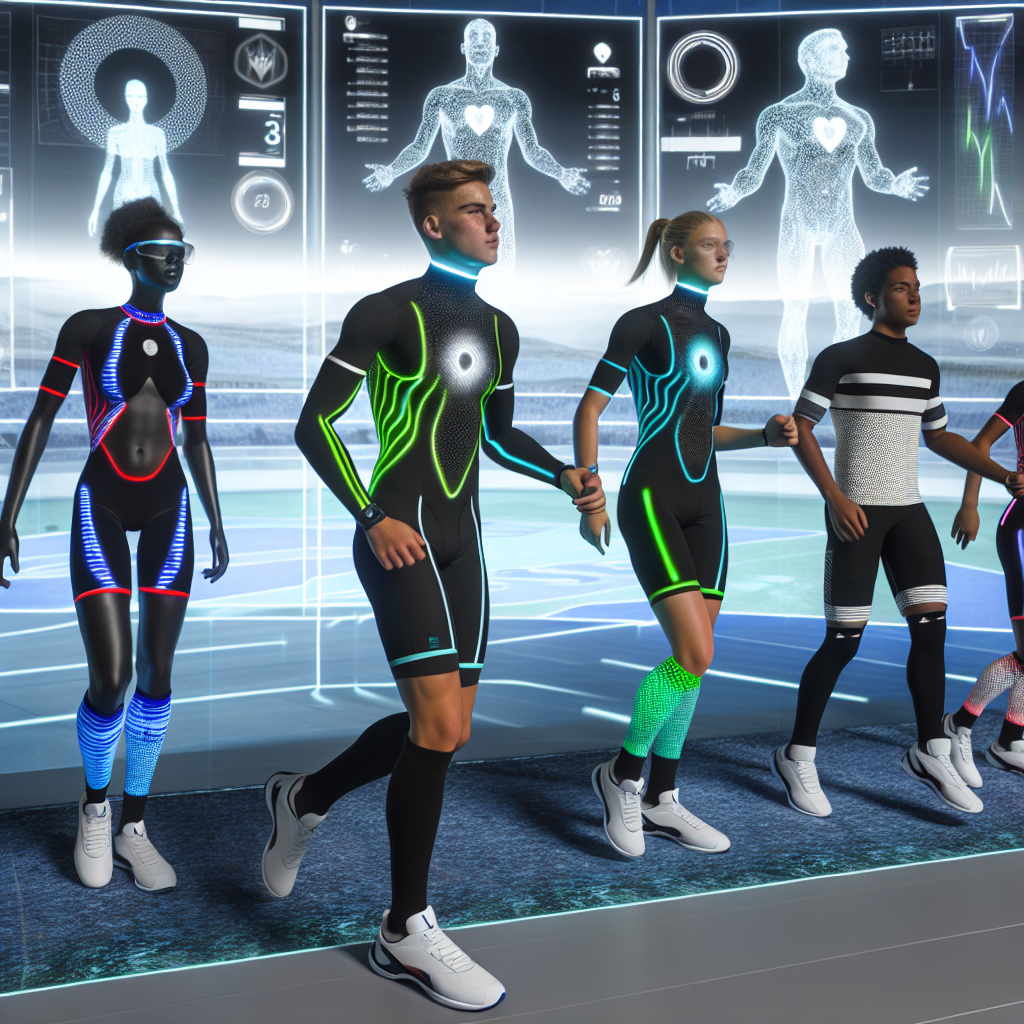Biometric Smart Clothing: The Next Generation of Performance Monitoring for Young Athletes
Revolutionizing Youth Athletics Through Wearable Tech
In today’s fast-paced world of youth sports, success no longer depends solely on raw talent or traditional coaching methods. A new frontier is reshaping how young athletes train, perform, and recover — biometric smart clothing.
This groundbreaking merger of fashion and technology delivers real-time health and performance data through wearable garments embedded with advanced sensors that sync seamlessly with smartphones or tablets. Designed to measure critical physiological metrics such as heart rate, muscle activation, body temperature, respiration rate, and movement patterns, biometric smart apparel is fast becoming the gold standard in performance monitoring for children and adolescents engaged in competitive athletics.
For parents of means who invest in high-level coaching, private travel teams, and luxury performance gear for their athletic children, biometric clothing represents the next evolutionary step in athletic development. Once confined to elite professional or Olympic-level athletes, this sophisticated technology is now being tailored to meet the needs of growing bodies through age-appropriate innovations. These garments are discreet, ultra-lightweight, and often indistinguishable from traditional athletic wear — delivering unparalleled benefits with zero added bulk.
Beyond Performance: Injury Prevention and Holistic Monitoring
At the youth level, smart clothing does more than just enhance performance. It also contributes critical insights into preventing injury and overtraining. For example, monitoring exertion levels in growing bodies can protect against strain to still-developing musculoskeletal systems. This careful monitoring is especially essential in intense, year-round sports environments where early specialization is prevalent and risk of injury increases.
Brands such as Hexoskin, Athos, and Sensoria Health are leading the charge, offering biometric wear designed specifically for youth and adolescent athletes. With options ranging from smart shirts, leggings, socks, to sports bras, these products are crafted to provide comfort without compromising performance. Some companies have even collaborated with pediatric sports scientists to tailor products to a younger demographic, ensuring the data collected is both accurate and engaging for the user.
These brands also integrate fun, gamified elements into their apps — encouraging young users to track their progress, set health goals, and learn about their bodies in the process. This makes smart clothing not just a performance tool but a fun, educational experience for kids and teens.
Science-Backed Benefits and Leading Research
Backed by research and technological validation, biometric smart clothing is not just innovative — it’s grounded in evidence-based sports science.
A study published in the Journal of Sports Sciences examined the accuracy of wearable ECG garment-based systems for athletic training. It found that these garments performed comparably to traditional monitoring equipment when tracking heart rate variability and breathing — showcasing the legitimacy of using smart garments as training and health tools.
➡️ Read the study
Further research from the American College of Sports Medicine supports the importance of consistent physiological data in identifying and preventing overtraining syndrome — a growing concern among year-round youth athletes. Through continuous monitoring, these garments can help identify early red flags like prolonged fatigue, poor recovery, and mood changes, helping avoid long-term damage.
➡️ Explore overtraining research
Children’s Healthcare of Atlanta utilizes wearable tech in pediatric sports recovery, supporting applications such as remote monitoring for injuries like ACL tears. Through shared data platforms, clinicians, coaches, and parents can coordinate on individualized recovery plans and efficiently monitor progress.
➡️ Visit Children’s Healthcare of Atlanta
Canadian startup Hexoskin has introduced youth-focused biometric gear, featuring kid-specific biometric norms and algorithms. These include growth-stage-adjusted metrics for things like cardiovascular capacity and body temperature variation—ensuring data is both age-appropriate and performance-relevant.
➡️ Explore Hexoskin’s solutions
A Smarter and Safer Path to Athletic Development
These cutting-edge capabilities have not gone unnoticed within the pediatric sports medical community. Many discipline-specific experts are now recommending that real-time data play a central role in forming training guidelines for youth. The emphasis is increasingly shifting from pushing young athletes harder to training them smarter.
With the rise of individual performance coaching, biometric smart wear offers parents and coaches actionable, objective data to guide decisions with precision across various areas:
– Training intensity adjustment
– Optimized nutrition and hydration timing
– Recovery schedule management
– Personalized injury prevention plans
– Monitoring of mental and physical wellness
This holistic insight is especially valuable in early development years, where every training decision can have both short- and long-term implications. With the ability to fine-tune regimens to a child’s unique biological signals, this kind of technology minimizes guesswork in youth athletic programming.
Conclusion: Investing in the Future of Youth Sports
Biometric smart clothing represents one of the most transformative tools in today’s performance and wellness landscape. More than a trend, it symbolizes a paradigm shift — where talent development is increasingly matched with data, safety, and science.
For families committed to their child’s athletic journey, adopting this technology delivers both immediate benefits, like performance optimization, and long-term gains, like injury prevention and progressive development. As smart clothing options continue to expand, it’s clear they will play a central role in shaping the next era of competitive youth sports.
By integrating biometric tech thoughtfully and alongside expert oversight, it becomes more than just wearables; it’s an investment in a child’s full physical potential, athletic safety, and overall development.
📚 References:
– Journal of Sports Sciences Study
– American College of Sports Medicine on Overtraining
– Children’s Healthcare of Atlanta
– Hexoskin – Smart Clothing for Youth
🧬 Join the Conversation!
Have something to say about youth sports performance tech? Leave your thoughts in the comments below — or share this post with a fellow sports parent who wants to level up their young athlete’s game the smart way! 🚀

Dominic E. is a passionate filmmaker navigating the exciting intersection of art and science. By day, he delves into the complexities of the human body as a full-time medical writer, meticulously translating intricate medical concepts into accessible and engaging narratives. By night, he explores the boundless realm of cinematic storytelling, crafting narratives that evoke emotion and challenge perspectives. Film Student and Full-time Medical Writer for ContentVendor.com




